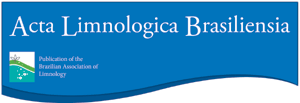Abstracts
Aim: The study aimed to determine the effectiveness of benthic macroinvertebrate dredge net sampling procedures as an alternative method to kick net sampling in tropical freshwater systems, specifically as an evaluation of sampling methods used in the Zambian Invertebrate Scoring System (ZISS) river bioassessment scheme. Tropical freshwater ecosystems are sometimes dangerous or inaccessible to sampling teams using traditional kick-sampling methods, so identifying an alternative procedure that produces similar results is necessary in order to collect data from a wide variety of habitats.
Methods Both kick and dredge nets were used to collect macroinvertebrate samples at 16 riverine sites in Zambia, ranging from backwaters and floodplain lagoons to fast flowing streams and rivers. The data were used to calculate ZISS, diversity (S: number of taxa present), and Average Score Per Taxon (ASPT) scores per site, using the two sampling methods to compare their sampling effectiveness. Environmental parameters, namely pH, conductivity, underwater photosynthetically active radiation (PAR), temperature, alkalinity, flow, and altitude, were also recorded and used in statistical analysis. Invertebrate communities present at the sample sites were determined using multivariate procedures.
Results Analysis of the invertebrate community and environmental data suggested that the testing exercise was undertaken in four distinct macroinvertebrate community types, supporting at least two quite different macroinvertebrate assemblages, and showing significant differences in habitat conditions. Significant correlations were found for all three bioassessment score variables between results acquired using the two methods, with dredge-sampling normally producing lower scores than did the kick net procedures. Linear regression models were produced in order to correct each biological variable score collected by a dredge net to a score similar to that of one collected by kick net sampling.
Conclusions The use of a dredge net in macroinvertebrate bioassessment schemes is an effective, alternative method in certain environments when site conditions prohibit the use of the preferred kick net sampling method. The results of this study can be used to aid in the development of other tropical freshwater bioassessment schemes around the world, including Brazil.
limnology; Zambia; ZISS: Zambian Invertebrate Scoring System; dredge net; kick net; benthic invertebrates

 Evaluation of alternative macroinvertebrate sampling techniques for use in a new tropical freshwater bioassessment scheme
Evaluation of alternative macroinvertebrate sampling techniques for use in a new tropical freshwater bioassessment scheme Thumbnail
Thumbnail
 Thumbnail
Thumbnail

